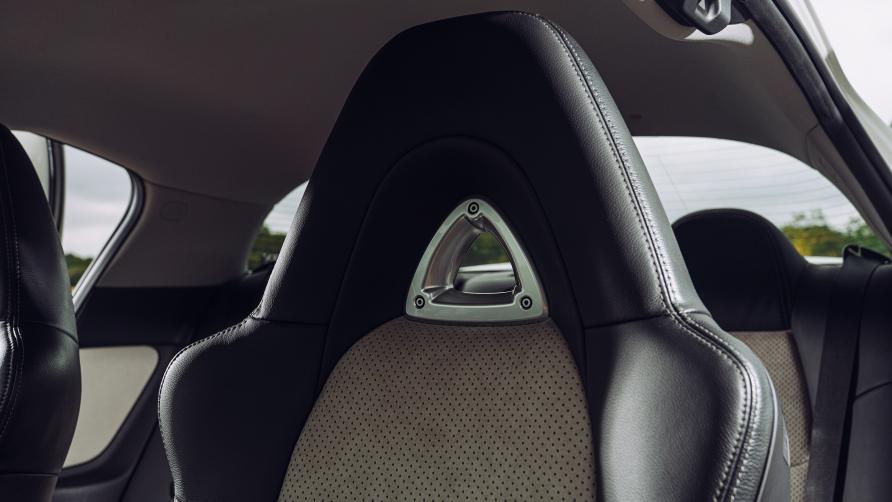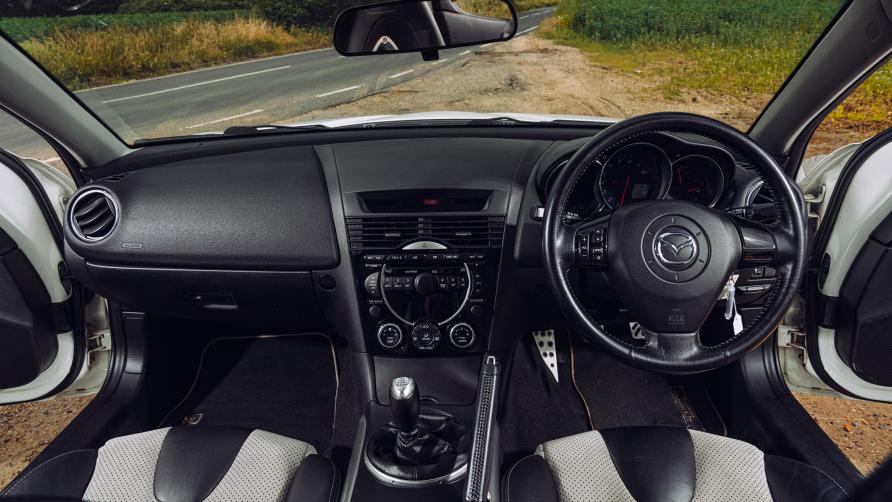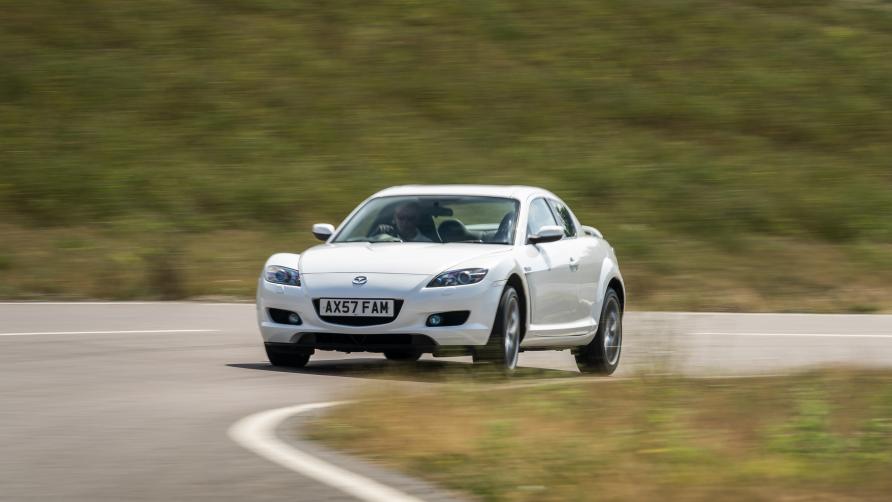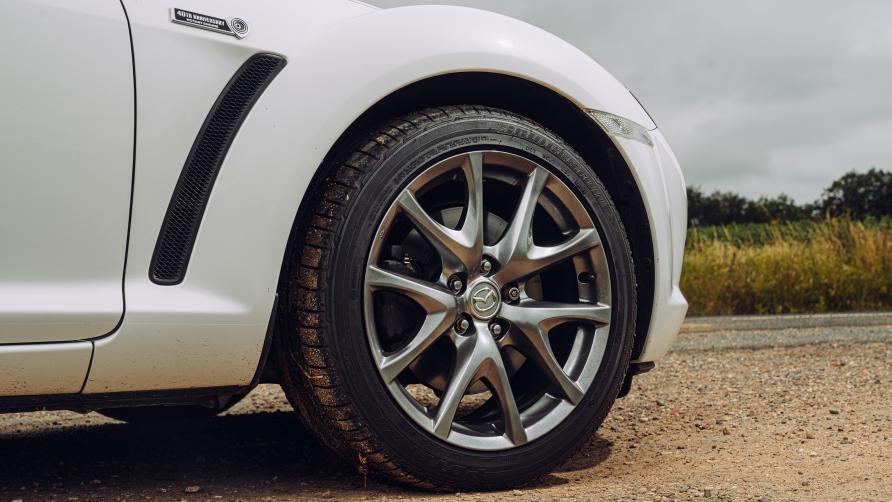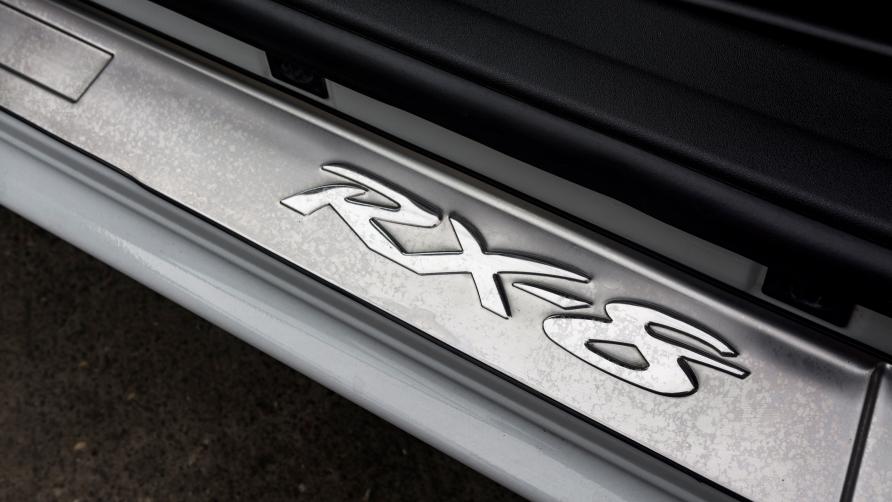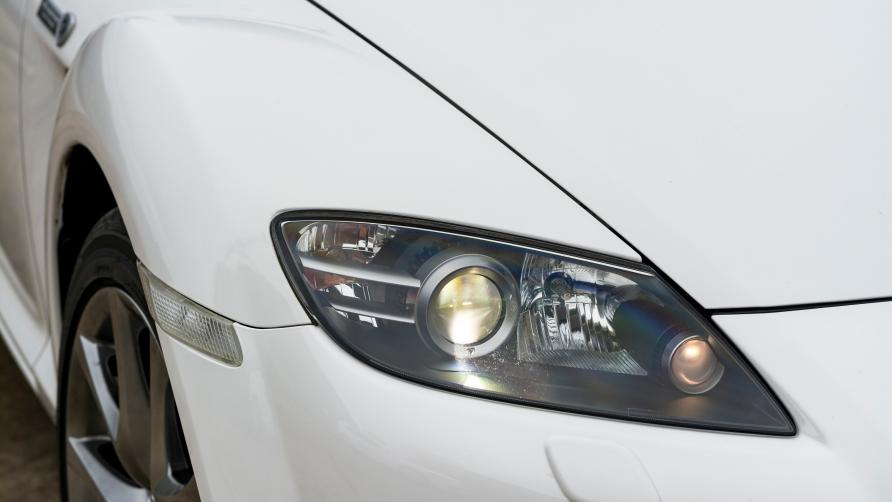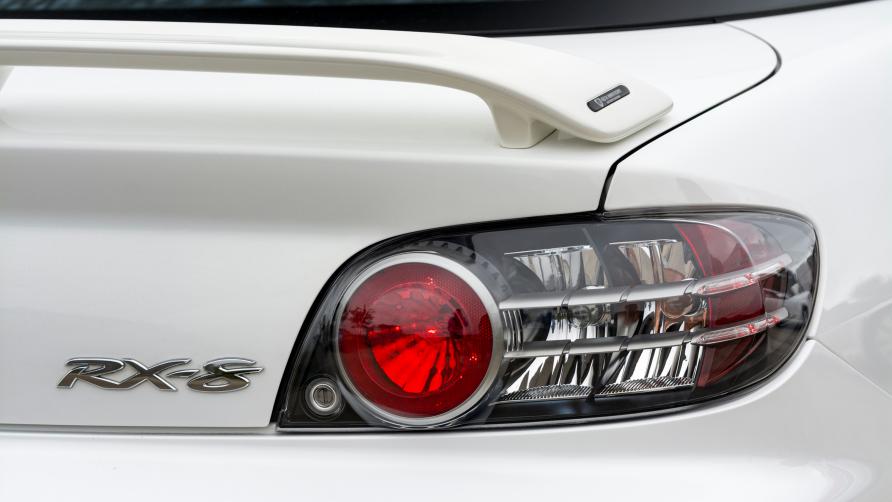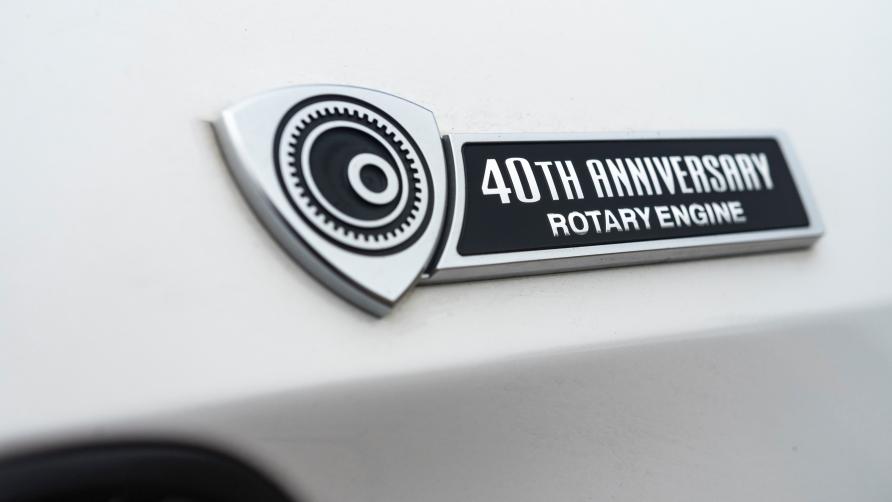Mazda RX-8 review: is the wildly doored Wankel coupe a wise buy?
Mazda RX-8 review: is the wildly doored Wankel coupe a wise buy?
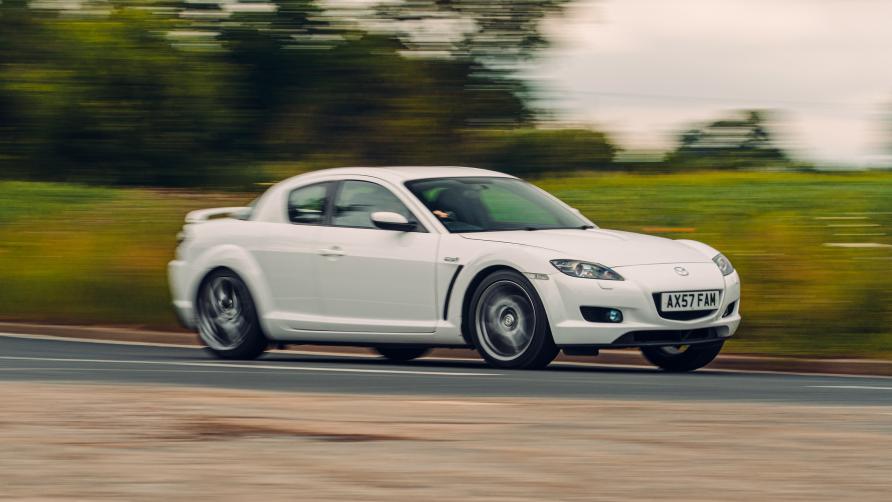
OVERVIEW- WHAT IS IT?
Rarely has a car broken with convention in such a wanton manner. The RX-8 appears to be everything cars today aren’t, and indeed it seemed to be swimming upstream for a fair few year of its existence.
A mid-sized coupe, it launched in 2003, just as mid-sized coupes were kinda dying out. The asteroid was certainly on its way, at least. Rewind to the Nineties and this was a bustling corner of the market. But sitting and naming some of the numerous mainstream examples – Calibra, Cougar, Prelude, Coupe (not every carmaker was imaginative) – only makes you realise how long ago this chapter closed. The rise of the SUV didn’t only claim the four-door repmobile’s popularity.
But the RX-8 was never really billed as a rival to mainstream coupes, even if its ample practicality and modest power output placed it right on their turf. It instead launched in tandem with the Nissan 350Z to join the Honda S2000 in the 'attainable Japanese sports car' sub-niche. These were cars riding the wave of The Fast and the Furious’ success, bringing a bit of JDM sparkle to early Noughties Britain.
So let’s pop back to ‘03 and see what all the fuss is about. A Russian bloke’s bought Chelsea for £150m (RM867m), Concorde has touched down for the final time and Blu Cantrell’s just replaced Daniel Bedingfield at number one…
ISN’T THE RX-8’S ENGINE SPECIAL?
It is indeed. If you’re spectacularly knowledgeable (or nerdy) you’ll know there’s rotary power up front from the shape of the RX-8’s gear knob and seat inlays – there are aesthetic Easter eggs galore inside the Eight. An evolution of the FD-gen Mazda RX-7’s twin-rotor Wankel engine, it measures just 1.3 litres in size but sends up to 227bhp to the rear wheels via the sole option of a manual gearbox (in the UK, at least).
What’s lightly problematic is the fact it’s naturally aspirated in here, losing the clever sequential twin turbochargers that helped make the RX-7 something resembling a Porsche 911 rival. The RX-8’s power output looks close to its predecessor's on paper, but its paltry 211Nm of torque makes it a tangibly – often frustratingly – slower car in the good ol’ real world.
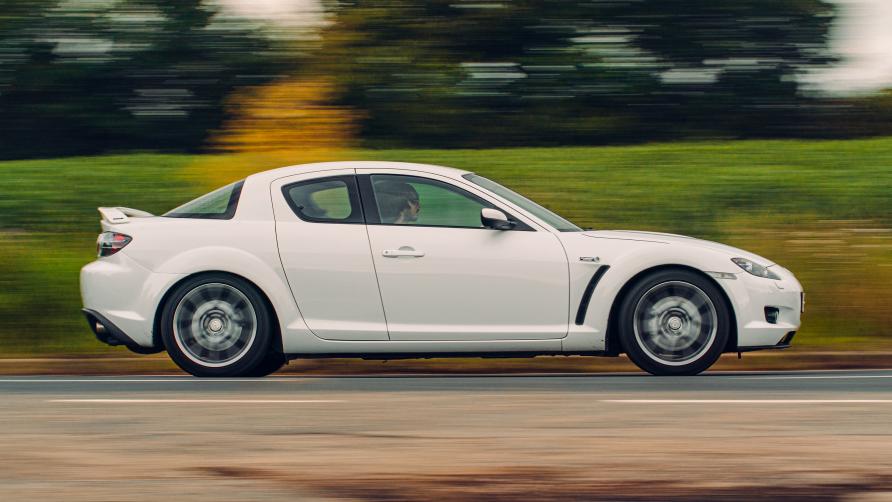
I THOUGH YOU GUYS LOVED NAT-ASP CARS…
When it’s an engine that revs hyperactively, we do. We’re besotted. But the excitement at seeing a ‘10’ on the RX-8’s rev counter when you climb in is eroded when you’re holding up a sedately driven Meriva on a slight incline because you’ve not dropped two gears. This is a car that needs working hard everywhere, not solely when you’re in the mood for it.
The counterbalance, though, is just how blimmin’ light this car is. Fit a weeny little engine and you get weeny weight in return, and the RX-8's 1.3 tonnes were around around 150 kilos lighter than a contemporary 350Z, the mass split in a clean 50:50 ratio for ultimate handling prowess.
And that’s all despite the RX-8 having something approaching real back seats, with relatively commodious hindquarters accessed via those iconic rear-hinged doors that have made a comeback for Mazda’s MX-30 electric car – with interior handles that look like they might even share the same part number in the huge Hiroshima stock cupboard.
WHAT'S THE VERDICT?
What a moment in time the Mazda RX-8 represents. And for all its flaws – chiefly an engine that needs absolutely flogging and troublesome reliability, issues which may be linked – it remains an exotic thing to behold.
The fact Mazda has brought back its doors for the MX-30 and has considered adding a Wankel engine to its maiden EV – as a way of extending its paltry range figure – suggests something of the RX-8 legend still appeals. And if you can pick up a well looked after example for £3,000 (RM17k) or so, it probably still does appeal. Good luck…
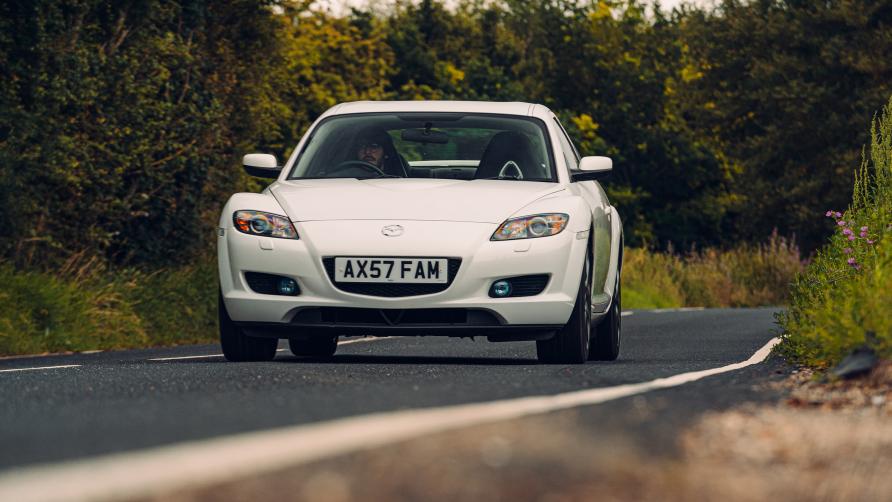
DRIVING-WHAT IS IT LIKE TO DRIVE?
So, it takes a bit of work to get the best out of the RX-8. This ought to be no surprise from a mere glance at its spec sheet. There were two versions on offer when new: a 189bhp, five-speed version that kicked prices off at £21,995 (RM127k) (oh, the olden days) and the one you actually wanted, a 227bhp six-speeder. Both delivered peak power well above 7,000rpm; most cars nowadays redline long before then.
HOW QUICK?
Mazda claimed a 235 kph top speed and 0-100 kph in 6.4secs for the more powerful car, which you see here in mid-life 40th Anniversary special edition trim. A facelift followed shortly after, bringing fussier looks, higher spec, stiffer suspension and a new ‘R3’ suffix.
Those figures look modest written down but they definitely feel accurate (and arguably a little optimistic) in the real world. If you’re at all accustomed with modern turbocharged sports cars, you’ll be frequently glancing down to check you’ve not left the handbrake on during your first few miles in an RX-8. There’s so little go below 4,000rpm you might reasonably wonder if something’s broken.
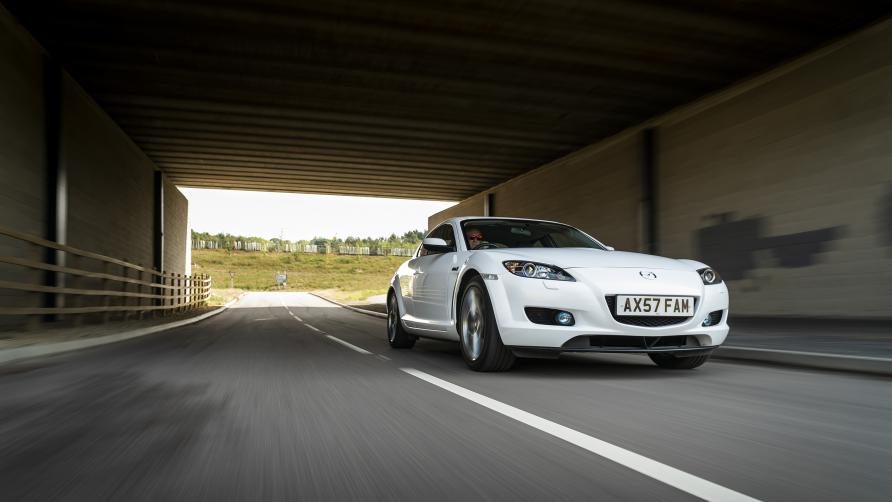
BUT IT IMPROVES ABOVE THAT?
Golly, yes. But it takes a really concerted effort to touch 9,000rpm and milk everything possible from its rotary powertrain – go by sound alone and you’ll have shifted before its power has peaked, so attuned your ears will be to the sound of an overly abused engine. If you’re not willing to chase every last rev you simply won’t experience everything the RX-8 can offer. Its chassis is a delight when its loaded up, but you’ll need gumption to work the engine hard enough to reach that point.
Do so and you’ll enjoy agile handling and quick, feelsome steering. No other contemporary coupe was quite this nimble, their weight figures notably higher than the Mazda’s. Though they undoubtedly had actual, tangible torque to compensate. If you’re willing to trade sheer guts in the name of handling, the RX-8 might just float your boat. Absolutely take a test drive of reasonable length to make sure, though.
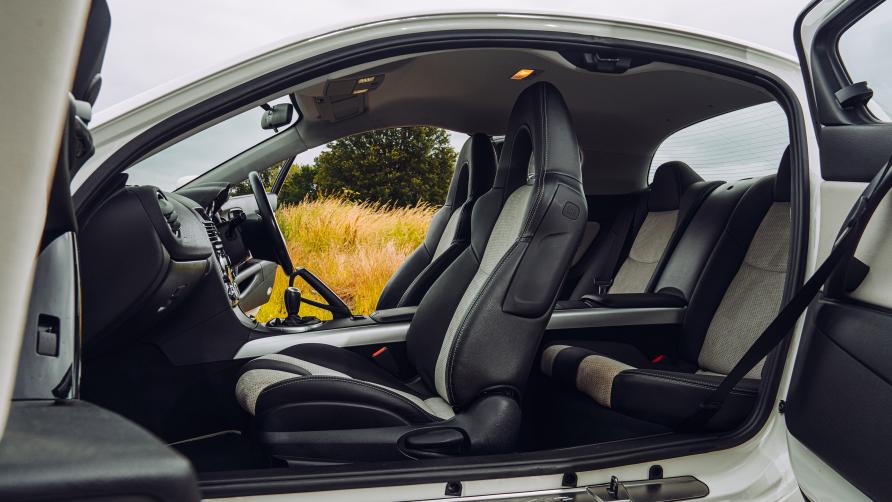
INTERIOR-WHAT IS IT LIKE ON THE INSIDE?
Its performance isn’t world class, then, but it’s inside where the RX-8 truly presents itself as something of a wild card. Those unsure whether to make the leap from the practicality of a hot hatch to the glamour of a coupe had their anxieties quietened by this car. With two decently sized back seats – and a door beside each – this Mazda purported to be the best of both worlds.
The fact absolutely no one followed suit save for Mazda itself with the recently launched MX-30 (which is neither hot hatch nor coupe, of course) ought to tell you how much of a success it was deemed. But even the best part of two decades on, the whole TG team still cooed over the Eight’s unconventional body. It remains a bewitching thing to simply behold.
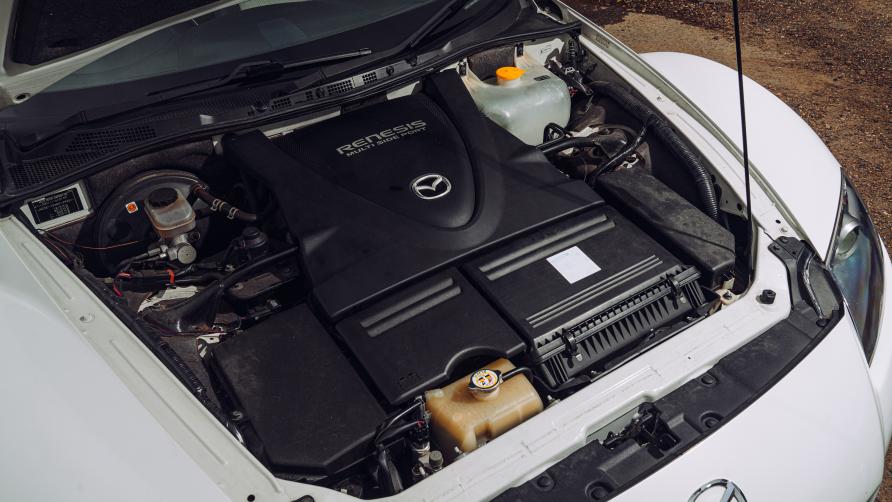
BUT WHAT ABOUT ‘SIT IN’?
Well those in the back get cupholders and a cubby hole, as well as the sort of pop-out rear windows not seen on three-door cars for a long time. So Mazda deemed their welfare as important and seats as real, not token gestures.
Up front, the RX-8 gives its age away with weeny wing mirrors and a button to select ‘minidisc’ as a music source. We’d argue the general design has aged well, though – the lack of fingerprint-smeared touchscreen clearly shows this isn’t a new car, and the sheer amount of space taken up by the handbrake probably proves why, on a practical level, these things are no longer mechanical.
But the layout works well and it all feels well screwed together. The seats are comfy and delightfully low-slung. Only the dated infotainment setup would prove irksome on a day-to-day basis if you're flitting into one of these from something more modern. And no, seeing a ‘10’ on your rev counter simply never gets old. Having to use the key to open the boot lid does, however.
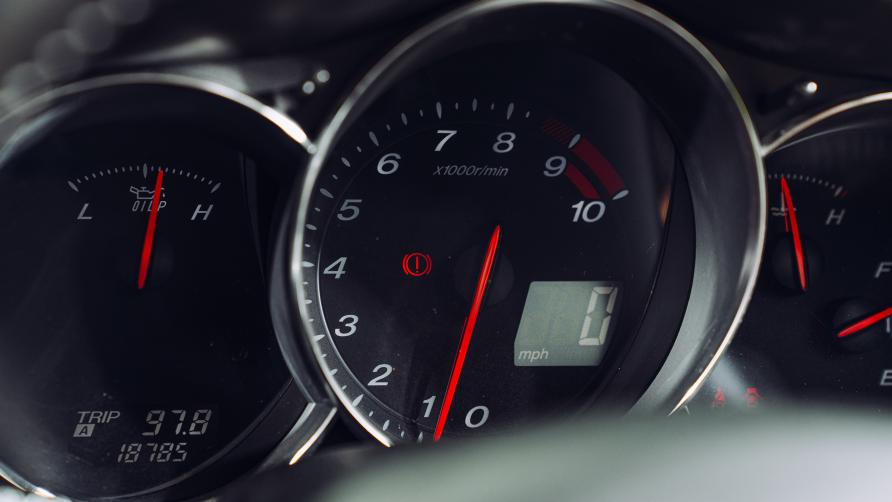
BUYING-WHAT SHOULD I BE PAYING?
The good news: RX-8s are cheap. Almost suspiciously so. A cursory glance of the classifieds will make it look impossible to buy one that a) costs you more than three grand or b) has more than 96560 km
But if your Spidey Sense is tingling, then well done. RX-8s come with an unofficial best-before date thanks to their esoteric engine, and that date is – you guessed it – around 96560km. It’s at this point their rotary power source needs some considerable attention if it’s not to have a fairly catastrophic moment to itself.
So in very bald terms, don’t buy a car you wish to last beyond said mileage if you’re not also setting aside some cash to look after it properly. And only buy a car if the seller has recently had a professional compression test carried out on the powertrain – or is willing to fund one – then really drive the car properly on a quite-clearly-essential test drive. A run round the houses simply won’t do. Make sure it’s not hesitant on start-up and there aren’t major flat spots when you accelerate. Engine seem in decent health? Check thoroughly for rust, especially if there’s been any sort of body kit fitted which might have hidden the bubbling or trapped moisture in.
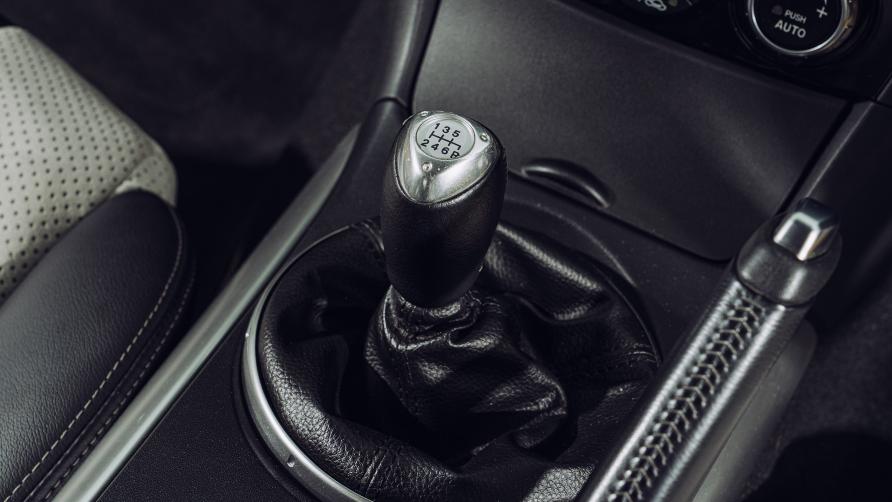
I’VE FOUND A GOOD ONE! WHAT NEXT?
Buy it, then run the thing properly. Pour in oil far more frequently than you would any other internal combustion car – Mazda reckons on 250ml every 1609km, but in reality, it might ask for a touch more – and get compression checks done as a matter of course. Oh, and prepare for circa 11.761 l/100km fuel economy (Mazda claimed 25 when new). It needs working hard, this car, whether that’s your usual style or not. Annual UK road tax is £340 (RM1966) on earlier cars (as we write), or £600 (RM3470) on anything registered after March 2006. Yowch.
